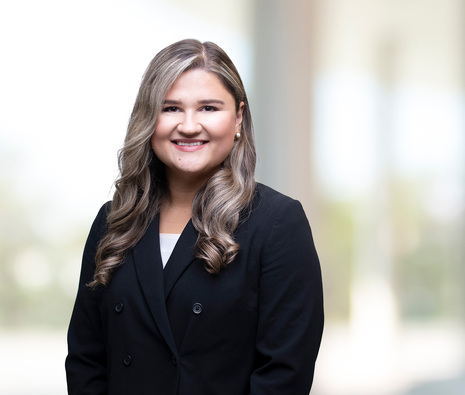FLSA & FMLA: DOL Releases New Guidance on Telework, Nursing Breaks, and Serious Health Conditions
On February 9, 2023, the U.S. Department of Labor, Wage and Hour Division (“DOL”) issued Opinion Letter FMLA2023-1-A and Field Assistance Bulletin No. 2023-1 relating to the Family and Medical Leave Act (“FMLA”) and the Fair Labor Standards Act (“FLSA”). Through this guidance, the DOL weighed in on compensable hours for teleworking employees, breaks for nursing employees, and leave for employees with serious health conditions. This article is a brief summary to highlight the impact on employers subject to the FLSA and the FMLA; however, to gain a better understanding of the aforementioned guidance, we suggest a full reading of both the opinion letter and the bulletin.
DOL Opinion Letter
In the opinion letter, the DOL offers clarity on the eligibility of employees with serious health condition to work a reduced number of hours per day under the FMLA. A serious health condition is defined as “an illness, injury, or physical or mental condition that involves inpatient care or continuing treatment by a health care provider.” An employer may require a medical certification of a serious health condition by a health care provider to accompany a request for leave.
At its core, the FMLA provides that an employee may take up to twelve workweeks of leave in a twelve-month period when it is medically necessary due to a serious health condition. Alternatively, if an employee requires only an intermittent or reduced schedule, the FMLA allows such employee to take leave in smaller increments of time with such increments lasting no longer than an hour. In addition, the opinion letter states that employees have separate and distinct rights under the FMLA and the Americans with Disabilities Act (“ADA”); thus, each statute must be analyzed separately. However, if an employee takes leave as a reasonable accommodation under the ADA, such leave may also be protected under the FMLA.
DOL Field Assistance Bulletin
Moreover, the bulletin advises employers on how to comply with the wage and hour obligations under the FLSA and the eligibility rules under the FMLA when it comes to teleworking employees. The DOL initially addressed teleworking in light of the COVID-19 pandemic by issuing Field Assistance Bulletin 2020-5 and publishing related guidance, such the COVID-19 and FLSA questionnaire. Even though the DOL does not necessarily change the existing regulations, the bulletin does clarify the DOL’s approach to telework moving forward. In sum, the bulletin provides confirmation that the FMLA and the FLSA apply to non-exempt employees regardless of whether such employees work remotely or in a permanently designated space.
FMLA Eligibility
Additionally, the DOL addresses the “hours worked” eligibility requirements and the small worksite exception under the FMLA in light of teleworking. In particular, remote employees must work at least 1,250 hours in the previous twelve months at a worksite with at least 50 employees in a 75-mile radius. The bulletin confirms that the 1,250-hour requirement is determined based on compensable hours of work as defined by the FLSA. In its turn, an employee’s personal residence is not a worksite. Rather, the size of the worksite to which the remote employee reports to or receives assignments from determines the FMLA eligibility. The bulletin further elaborates that employers must establish a system to track the remote workers’ hours.
Compensation and Hours Worked
Generally, the FLSA requires covered employers to pay employees for all hours worked unless an employee takes a long break (i.e., for more than 20 minutes). Employees who work telework must be compensated for all hours worked that were performed based on the employer’s “actual” or “constructive” knowledge of work, including any unscheduled and unauthorized hours worked so long as such hours are reported to the employer. However, according to the prior guidance, “if an employee fails to report unscheduled hours worked through [a reasonable process to report unscheduled hours], the employer is generally not required to investigate further to uncover unreported hours.” Thus, under the FLSA, an employer is not required pay for work the employer does not know and has no reason to know about.
In terms of the amount of compensation, employees must be compensated the same wages for the work performed at the primary worksite as the work performed away. Generally, short breaks lasting less than 20 minutes are regarded as compensable hours whereas breaks that “are long enough to enable [the employee] to use the time effectively for [their] own purposes” are not regarded as such. By way of comparison, a bona fide meal break of 30 minutes or more is not counted towards the compensable hours worked if an employee is “completely relieved from duty for the purposes of eating regular meals.” An employee is considered to be completely relieved from duty if the employee is informed in advance that he or she may leave the job without the obligation to commence work until a certain later time or the employee’s time of choice.
Nursing Employees
Under the FLSA, an employer must provide an employee with a reasonable break time and an appropriate place to pump breast milk for one year after the birth of the employee’s child. Such obligation to provide an “appropriate place” extends to employees who telework. For instance, if an employee working remotely attends a videoconference off camera in order to pump, the employee must be compensated for that time and be considered on duty while pumping. Compensation for the nursing employees relieved from duty during the break is not required unless other types of breaks are compensated as a matter of course or as a matter of law. For further guidance on employer obligations with regard to nursing employees, please see the recently enacted PUMP Act and the existing DOL guidance (i.e., the DOL Fact Sheet #73).
Employer Impact
Many employers adjusted their remote-work and telework compliance strategies at the height of the COVID-19 pandemic, some of which may remain permanent. As such, employers should closely examine both the opinion letter and the bulletin to aid in navigating the waters of the FMLA and the FLSA. Further, given the recently enacted state laws nationwide, employers should review (or request their counsel to review) state and local wage and hour laws, leave laws, and nursing-related guidance to ensure compliance all around.
About Maynard Nexsen
Maynard Nexsen is a full-service law firm of 600+ attorneys in 31 locations from coast to coast across the United States. Maynard Nexsen formed in 2023 when two successful, client-centered firms combined to form a powerful national team. Maynard Nexsen’s list of clients spans a wide range of industry sectors and includes both public and private companies.
Related Capabilities








